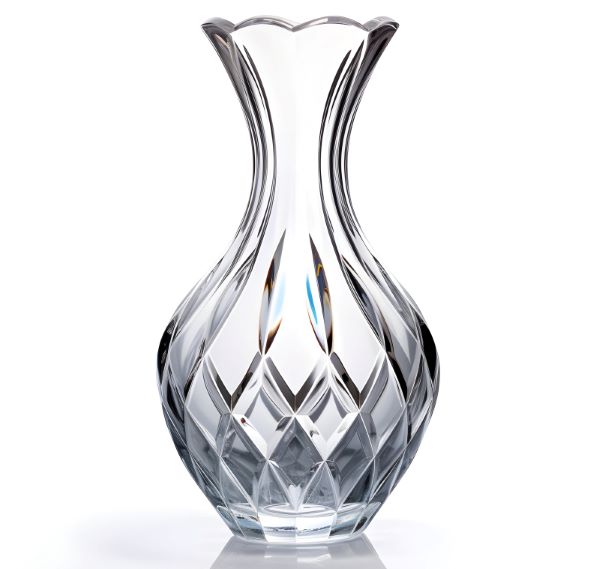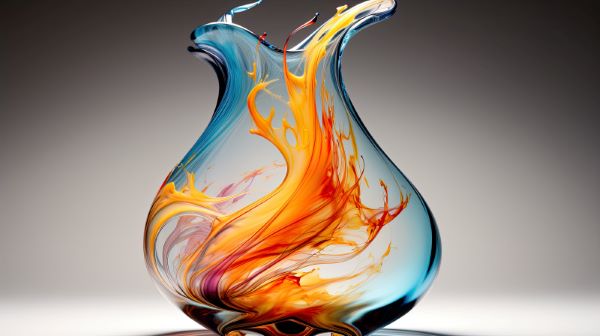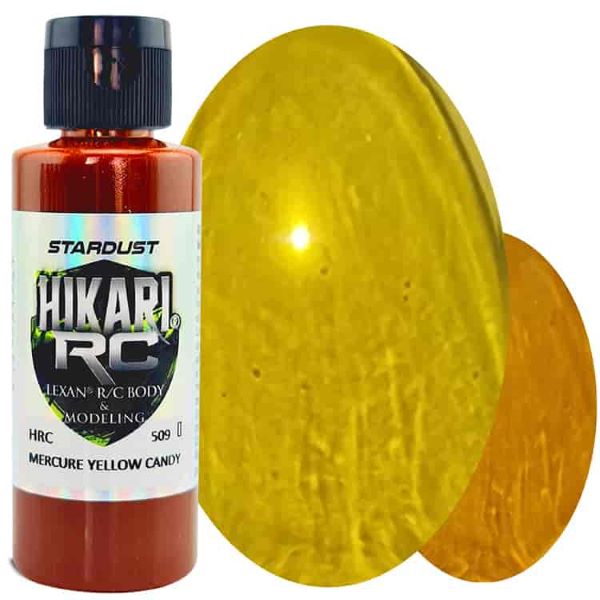All Products are in stock
and shipped from France.
Delivery within 48 hours.
and shipped from France.
Delivery within 48 hours.
Our categories
How to apply paint on glass?
Thank you for reading this article, which I have written to provide solutions for those seeking guidance on painting glass for various projects! This guide contains detailed information about ensuring adhesion and durability when painting on glass, a material that is extremely hard, smooth, and non-porous, making it difficult for standard paints and coatings to adhere properly.

There are specially designed products for painting on glass, which also work on ceramics and enamels.
Solvent-free Options:
►Transparent acrylic colors for Glass (60ml)
►Matt or glossy acrylic clearcoat for Glass (Available in 60ml, 250ml, 1L)
Solvent-based options
►Glass and Ceramic Adhesion Primer (Available in aerosol or can)
►Two-component polyurethane glossy clearcoat for glass and ceramics
I will present different options and techniques to help you paint glass while ensuring perfect adhesion and long-lasting results.
By following one of these techniques, you can be sure that your paint and design will not peel off, either on its own or due to heat, humidity, tension, chipping, or impact.
Painting on glass—whether it be a bottle, window, stained glass, or decorating glassware and mirrors—is possible with a brush, aerosol, or airbrush (freehand or using adhesive stencils). Yes! But only if the surface is properly prepared and if a primer or special paint is used.
As I will demonstrate below, there is a technique for creating adhesion on glass without any primer.
Glass paint can be solvent-based or water-based, but these must be specially designed to adhere to glass. Alternatively, any paint you have at hand can be used if an adhesion primer is first applied.
This adhesion primer is completely invisible and transparent, allowing paint to be applied onto glass. In this article, I will introduce two transparent primers as well as matte and glossy varnishes for glass.
How to Ensure Long-Term Adhesion When Painting Glass?

Preparing the glass
The first and most crucial step when painting glass is surface preparation. Applying paint or a specialized primer to an unclean surface will lead to poor adhesion and durability.
Clean the glass surface thoroughly by degreasing it with vinegar (acetic acid), alcohol, or a professional glass cleaner.
Ensure the surface is completely dry and free from dust before applying any primer or paint.
Using an Adhesion Promoter for Painting on Glass
An adhesion primer is a specialized liquid product designed to bond with glass surfaces. It is used when decorating glass and applying various transparent or opaque colors.
There is also a technique to achieve strong adhesion on glass without using a primer, which will be discussed later in this article.
These primers are completely transparent and can be coated with any type of paint.
A solvent-based primer can be applied with an airbrush or spray gun. It is very liquid and dries quickly. If no spray tools are available, it can also be applied with a brush.
A transparent acrylic clearcoat, available in glossy or matte, adheres strongly to glass, crystal, and ceramics. Although not initially designed for adhesion, it becomes completely non-removable once dry. It is available in sizes from 60ml and is solvent-free, odorless, and easy to apply with an airbrush or brush.
This acrylic primer can be tinted in the mass, with transparent or opaque colorants. I'll tell you more about this at the bottom of the article.
Please note: the adhesion primer ensures perfect hold on the glass, but you still need to apply the paints correctly to the primer? To do this, you need to ensure that the paints will adhere to the primer.
There are 2 ways of doing this :
1- Quickly cover the primer with the paints, before the primer has superficially dried, i.e. during the 'wet-on-wet' interval.
Solvent-based primers dry very quickly. So you need to cover quickly (within 10 minutes), whereas with acrylic glass primer clearcoat, you can cover in your own time (48 hours).
2 - If you want to make designs, especially complex ones with adhesive masking, scalpels and stencils, in this case, it's imperative to let the primer dry completely and then sand, using an abrasive sponge or 500-grit sandpaper.
Don't worry, all those sanding micro-scratches will disappear completely once the paint or clearcoat has been applied.
When painting on glass, it's important to choose the right product, especially in terms of resistance. If you want to paint on glass that will be exposed to the elements for 10 years, or that will be regularly put in a washing machine, you need to choose an excellent adhesion primer as well as a resistant finish.
This brings us to the resistance of glass clearcoats.
Professional glass clearcoats
There are many paints and clearcoats to choose from, including different qualities and levels of resistance. Clearly, avoid at all costs products sold in supermarkets and department stores. Choose a professional-quality product.
Without doubt, the most resistant products are polyurethane clearcoats, which are two-component clearcoats (clearcoat + hardener) that harden by polymerization. This creates extremely hard finishes, resistant to all kinds of products, solvents, acids and temperatures (around 250°).
We offer a clearcoat used by manufacturers to coat glass and ceramics. This can be any type of object, such as wine bottles.
Polyurethane clearcoat for glass and ceramics. This is a totally translucent, high-gloss clearcoat that forms a layer of around 25 microns when dry. 2 coats are recommended. This 2K varnish ensures total and perfect adhesion to all types of glass. It is a flammable clearcoat for professional use only.
We also offer HIKARI RC solvent-free clearcoat, a single-component, water-based acrylic clearcoat available in matte or gloss, which dries very quickly in ambient air.
Having already used it myself, I was extraordinarily surprised by the level of adhesion produced by this clearcoat, but also by its resistance. It's an easy-to-use clearcoat for the general public, as it's odorless and harmless. It can easily withstand years of machine washing with detergents and high temperatures.

Food-safe clearcoat for glass
A food clearcoat is a product that has been tested, approved and certified to a certain standard, guaranteeing the absence of migration of dangerous molecules or substances from the dry clearcoat to foodstuffs.
There are 2 main types of food clearcoats, either for indirect contact, such as a kitchen top, or for direct contact. These include clearcoats that coat the inside of food containers, such as those used on cans.
We offer both types of food clearcoat.
These coatings have no special properties that enable them to adhere to different substrates, including difficult materials such as glass. However, they can be used just above any of the glass or ceramic adhesion primers listed in this article.
Tinting glass clearcoats
These special glass clearcoats can be colored and tinted by adding concentrated colorants, to produce tinted clearcoats or even paints.
For example, you're all familiar with stained glass windows in churches, which color the light through a process of coloring the glass in the mass. The same can be done with colorants in glass clearcoat.
There are translucent and transparent dyes, or opaque dyes (which don't let light through).
To color solvent-free acrylic clearcoat:
► Concentrated transparent dyes available in a dozen colors. Dosage 5-6%.
►Opaque dyes (available on request).
To color solvent-based polyurethane clearcoats:
► Concentrated transparent solvent-based dyes
► Solvent-based opaque dyes Dosage 5-6%
There are many other original tricks to personalize your transparent clearcoats, by giving them shine with transparent pearls, or even by giving them a photoluminescent effect, thanks to phosphorescent powders, for example. Dosage 10-20%.

Promote adhesion on glass without primer
Here's a technique that allows any paint or clearcoat to adhere to a glass surface, without the use of a primer.
Although this technique is highly effective, I always recommend using a primer or paint specifically for glass.
This method uses a phenomenon known as molecular bonding or “covalency”. It is applied with a gas-fed torch. It's a process that's widely used industrially, with plasma torches.
However, the same efficiency can be achieved with a gas stove or torch.
Simply pass over the glass surface two or three times with the blue flame, then apply the paint, waiting a minute for the surface to cool. The flame creates a covalent bond between the atoms on the surface and those in the paint.
How to prepare and paint plastic?
How do I paint glass and ceramics?
How do I paint ferrous metals?
How to paint on concrete?














































































